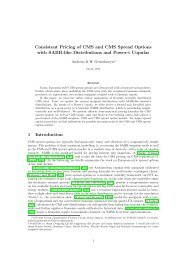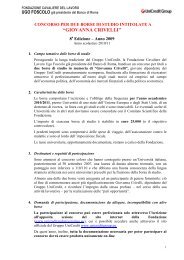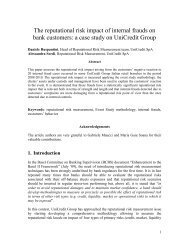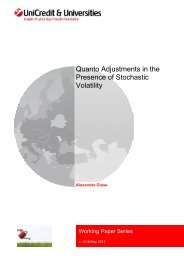Dóra Fazekas Carbon Market Implications for new EU - UniCredit ...
Dóra Fazekas Carbon Market Implications for new EU - UniCredit ...
Dóra Fazekas Carbon Market Implications for new EU - UniCredit ...
Create successful ePaper yourself
Turn your PDF publications into a flip-book with our unique Google optimized e-Paper software.
Figure 22. GHG emissions, CO2e, without removal through sinks<br />
Source: National Inventory Report (Hungarian Meteorological Service, 2008)<br />
A regional comparison by Deloitte (2007) reveals efficient industrial energy consumption practices<br />
in Hungary. The study shows that to produce one unit of GDP, Hungary emits a relatively low<br />
amount of carbon dioxide – in other words, Hungary’s carbon intensity is fair. <strong>Carbon</strong>-intensity<br />
shows the quantity of CO2e emissions required to produce one unit of the country’s gross domestic<br />
product. According to 2005 data, Hungarian industrial installations covered by the <strong>EU</strong> ETS emitted<br />
233 tonnes of carbon-dioxide to produce one million USD worth of GDP (National Climate Change<br />
Strategy, 2008). McKinsey (2008) defined another indicator; the inverse of carbon intensity, calling<br />
it carbon productivity and showing how much GDP is produced through the emission of one tonne<br />
of CO2e.<br />
In their country report, Szlávik et al. (1999) point out that Hungary’s GHG emissions are significant<br />
neither from an absolute nor a relative perspective; thus, it is not the quantity of emissions that is<br />
the primary driving <strong>for</strong>ce <strong>for</strong> participation in emissions-reduction schemes. Hungary is, then,<br />
motivated more by a desire to participate in the community ef<strong>for</strong>t. This country report presents the<br />
opportunities <strong>for</strong> reducing GHG emissions in Hungary, along with their costs and methods of<br />
realization. The authors point out that the primary means of reducing emissions is increasing energy<br />
efficiency, both among the general population as well as in industrial sectors. Following a brief<br />
overview of Hungary, the authors assess the state of the country’s energy sector in 1999, its national<br />
energy policies, institutional framework as well as the effects of emissions on the environment.<br />
They then proceed to define baseline and mitigation scenarios <strong>for</strong> Hungary’s GHG emissions in the<br />
period 1990-2030. The results of their findings show that GHG emissions, which do not originate<br />
74









